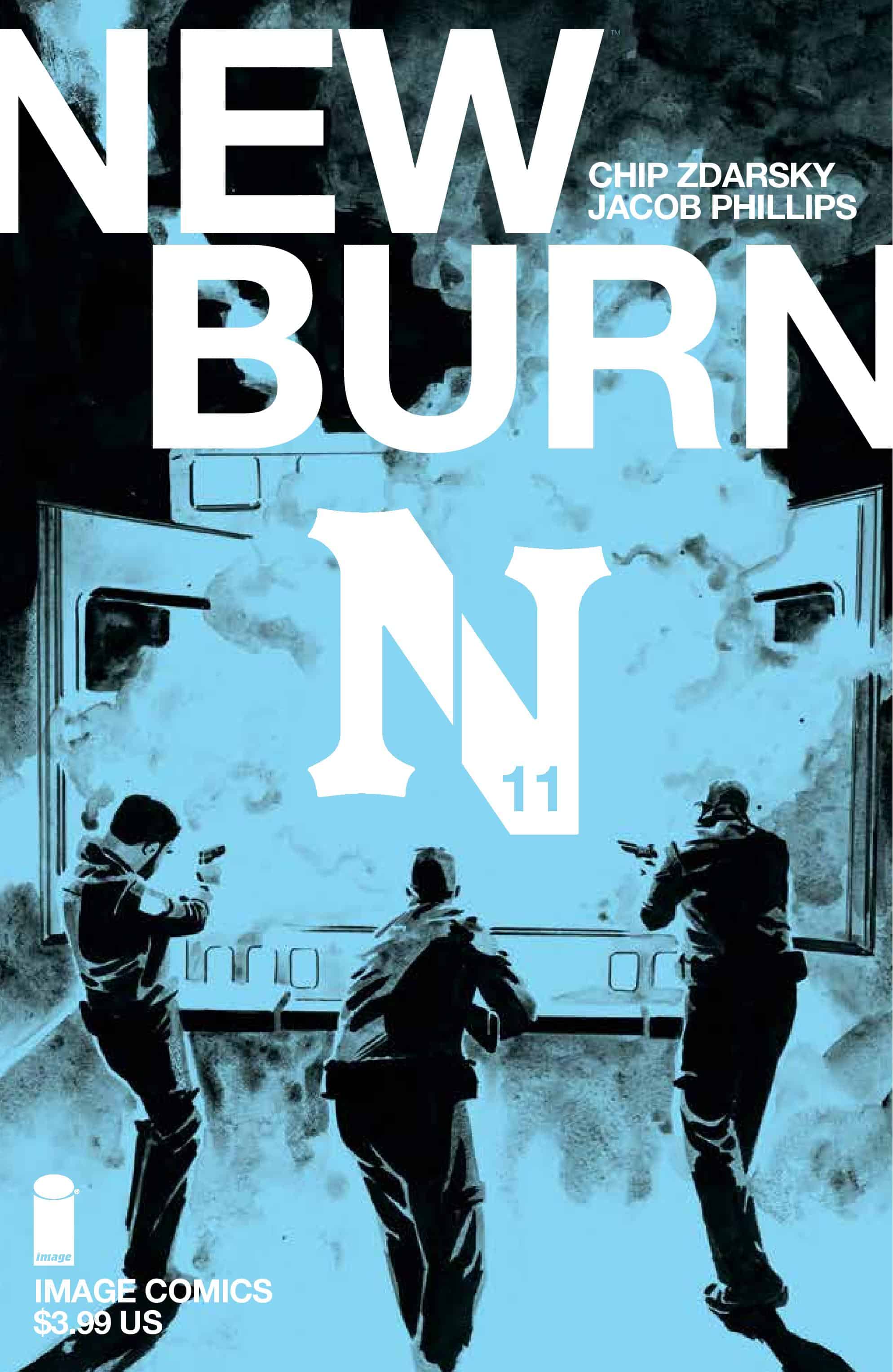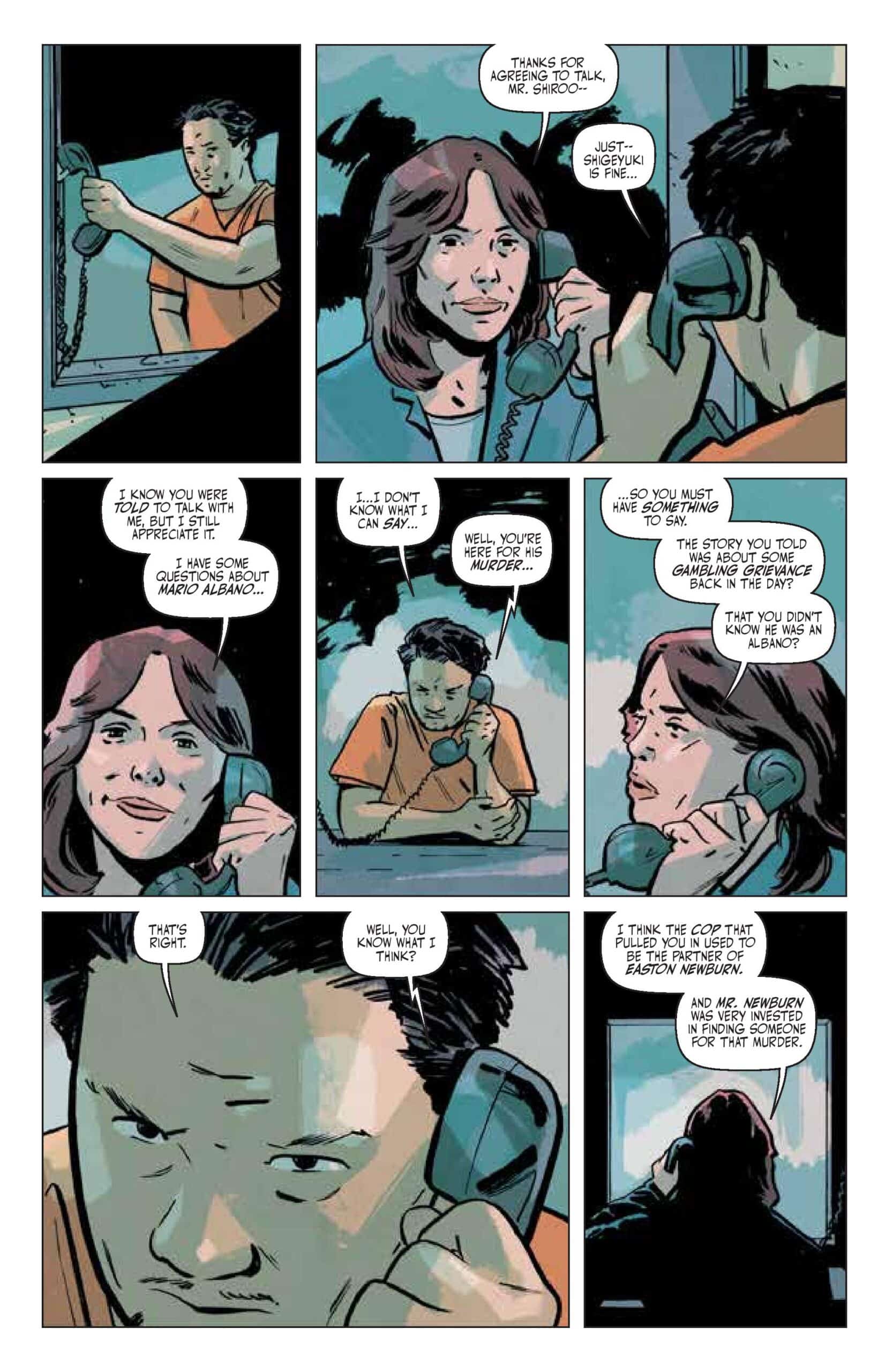Newburn #11

Recap
An ex-Yakuza is on his way to the States for a liver transplant in exchange for intel on NYC Yakuza activities. To stop the info from making it to the Feds, Newburn and Emily have to dodge the cops and the FBI.
PLUS: In "GO BACK" by DRAGOTTA & BROTHERS, the kid tries to find a single friend in a city of eight million strangers.
Review
Coloring and tone go hand in hand, as various shades and hues can influence the underlying theme or emotion behind a scene. A harsh red can lead an audience member to the feeling of anger or hatred, while a forest green evokes the calming presence of the trees and a bountiful garden. Just like with plot, linework, and lettering, coloring sets an atmosphere and attachment to an emotion that can sell the essence of a story and its artwork. With a book like Newburn, which features an artist/colorist double threat in the form of Jacob Phillips,
Newburn #11 – written by Chip Zdarsky with art, colors, and letters from Jacob Phillips, and color assists by Pip Martin – is another shocking turn into the unraveling of the criminal ceasefire of New York, as Newburn is drawn onto a case for the new head of the Yakuza. The mystery is who killed the previous head, which both Newburn and the audience know the answer to; the former right hand who was arrested in issue seven for the murder of Mario Albano.
Now, Newburn and Emily have to walk a fine line to avoid the truth getting out while proving their usefulness to the families. Meanwhile, another key member of the Yakuza organization is flying to the States for a liver transplant, which indicates they’ve cut a deal with the FBI for special treatment. The two plots could point to an issue with Newburn’s position as neutral ground for the families, and tip the scales in one direction. While tracking down leads, he goes back to Casey after reminding her of her place in his role during the last issue, wanting to use a connection she has in the FBI. All the while, Natalie, the reporter on the scene of Newburn starts to tie the Yakuza and Albano spats together, looking for a chink in the detective’s armor.

Zdarsky’s script for this issue delivers a tense, off-kilter look at the ways that secrets unravel, no matter how cleanly they’re tied up. The crux of the issue’s tension relies on how close outsiders (anyone not Newburn or Emily) get to the secrets about the Albano and Yakuza murders. A gun never needs to be drawn, as a question suffices for the weapon of choice in this battle. Newburn seems a bit more in control after the spinout of the last issue and continues to play those around him even as his strings start to shorten. Natalie represents the largest threat of the issue, with a sharp mind that seems to rival Newburn’s and a tenacity that refuses to drop a lead.
The conclusion of this arc seems to be telegraphed by the end of this issue, but knowing the Newburn structure, plenty of pivots are lurking in the shadows. Natalie’s uncovering of the truth is going to provide the crime family with their smoking gun unless Newburn can destroy another piece of himself to take her out. Or Emily proves her true allegiance to either Newburn, the families, or herself. A juicy part of this book is the depths of speculation, and Zdarsky makes any of the paths forward equally compelling. Much of that comes from the experience of ten previous issues, and a fine weave of intricate mysteries and shifting loyalties in this world of crime.

Another angle that makes the book such an enthralling experience is the shift in color palette that Phillip employs for the issue. The cover indicates that shift, with a cold blue permeating the atmosphere of the story. The cover uses a stark blue that echoes throughout the backgrounds and costuming of the issue, creating a cool tone that feeds the tense game between characters. The soft blue background of the cloudless sky feels tonally different from the sterile background of the prison that Natalie goes to visit, and even the homey blue-green of Casey’s apartment. Each of those hues evokes a distinct emotion but falls into a close balance of highwire tension.
The artwork also matches that range on display in the coloring, working to emphasize the curiosity that underlines every interaction of the issue. Whether it be the Yakuza members trying to affirm their role as leader while assuring doubts, Natalie’s obsessive streak regarding Newbun, or Emily’s search for a way out of the brewing storm, Phillips creates a series of complex spectrum of emotions conveyed through faces and anatomy.
The icy tension between Newburn and the Yakuza is sold by close-up panels and reaction shots of characters gritting through formality. The close-up pairs with the solid background to create a simple contrast that makes the emotion even more palpable. The chilling implication of Oyabun’s words sinks right in thanks to the layout and coloring, and no time is wasted in reinforcing this tone later in the issue.

Later in the prison, Natalie and Shiroo’s conversation flows in a similar manner, moving in and out of close-ups and reaction shots that reflect an idea-driven conversation. There’s never a sight of a weapon or external threat, but Phillips heightens the tension through his use of a steady rhythm of panel blocking. Even a panel of the back of Natalie’s head is enough to draw the eye and sell the targeted nature of Natalie’s inquiries. Even when she has to conclude silences, Phillips’s linework conveys the cocky, revelation of truth that Natalie comes to by the end of the interaction.
Final Thoughts
Newburn #11 is a prime example of how an established tone and rhythm can be twisted for maximum effect. Zdarsky takes the idea of clashing questions and applies it to the center of the Yakuza case from the first arc, which charts a path forward for Newburn and the other lead characters. Nothing in the issue is too shocking or out of line, but the constant affirmation of tone by Phillips in the spectrum of blues and the use of close-ups. Newburn and its creative team continue to uncover new ways to dig into these mysteries and concepts through character and coloring specifically.
Newburn #11: ‘When the cold wind rolls in from the north/What am I to do, what am I to do, oh lord’
- Writing - 10/1010/10
- Storyline - 10/1010/10
- Art - 10/1010/10
- Color - 10/1010/10
- Cover Art - 10/1010/10





